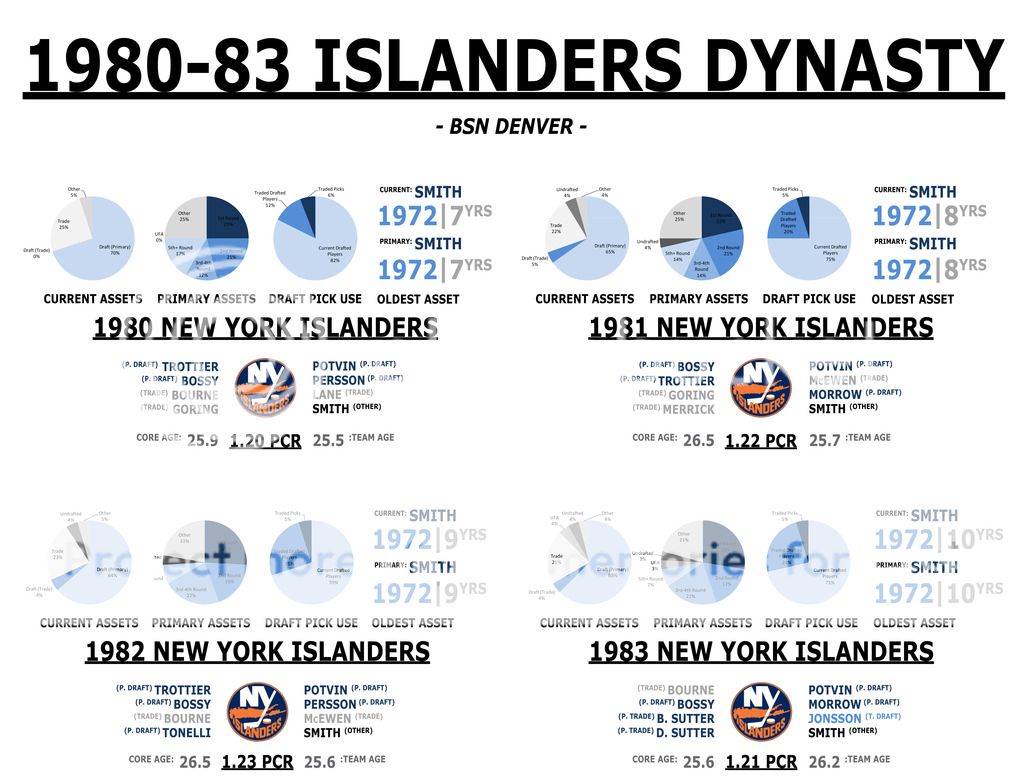© 2025 ALLCITY Network Inc.
All rights reserved.

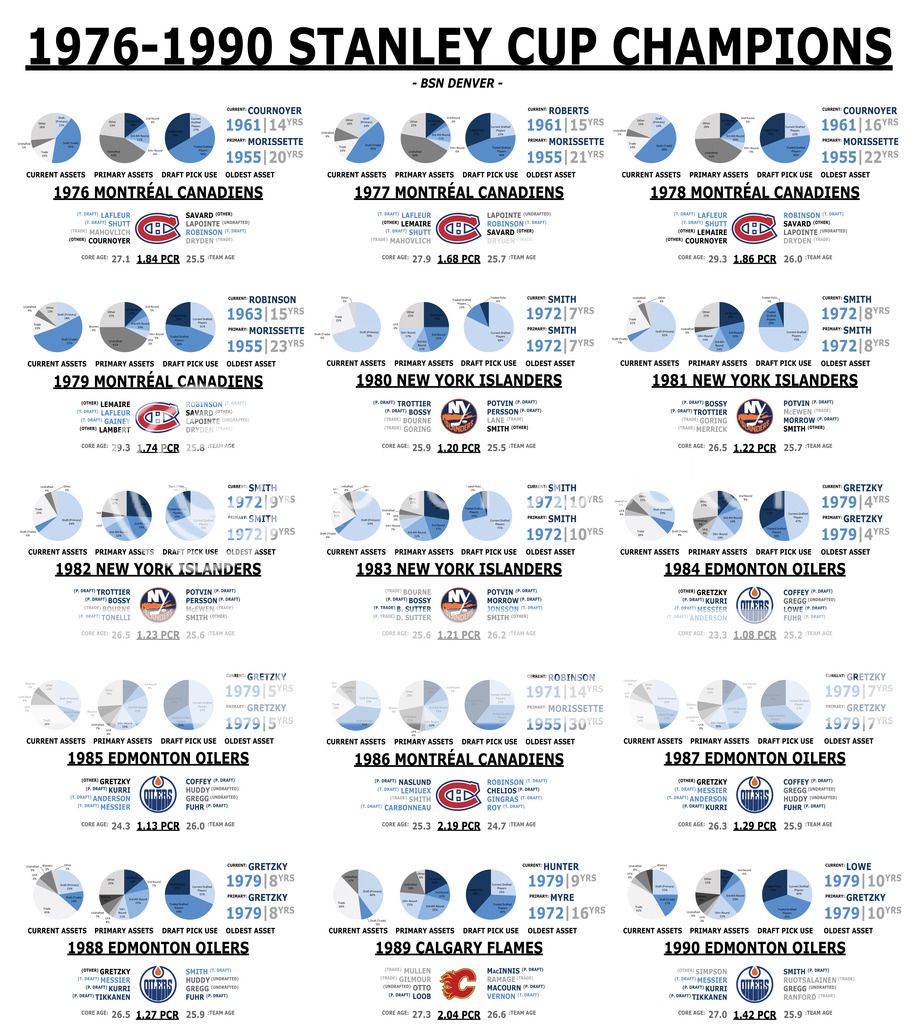
(Click Here for Full Size Image)
Have you ever wondered how the great dynasties of the 1970s and 80s were created? There’s no doubt they had great players, with nine future Hall of Famers on Montreal’s rosters (ten if you count Roy in ’86), five from the Islanders, and another six from the Oilers. Even the Calgary Flames, the only team to crash the party during this era, boasted Lanny McDonald, Joe Mullen, Doug Gilmour, and a young Joe Nieuwendyk on their team.
So how did these teams collect such a vast amount of talent? As it turns out, each played the system in their own way. Let’s start with Montreal.
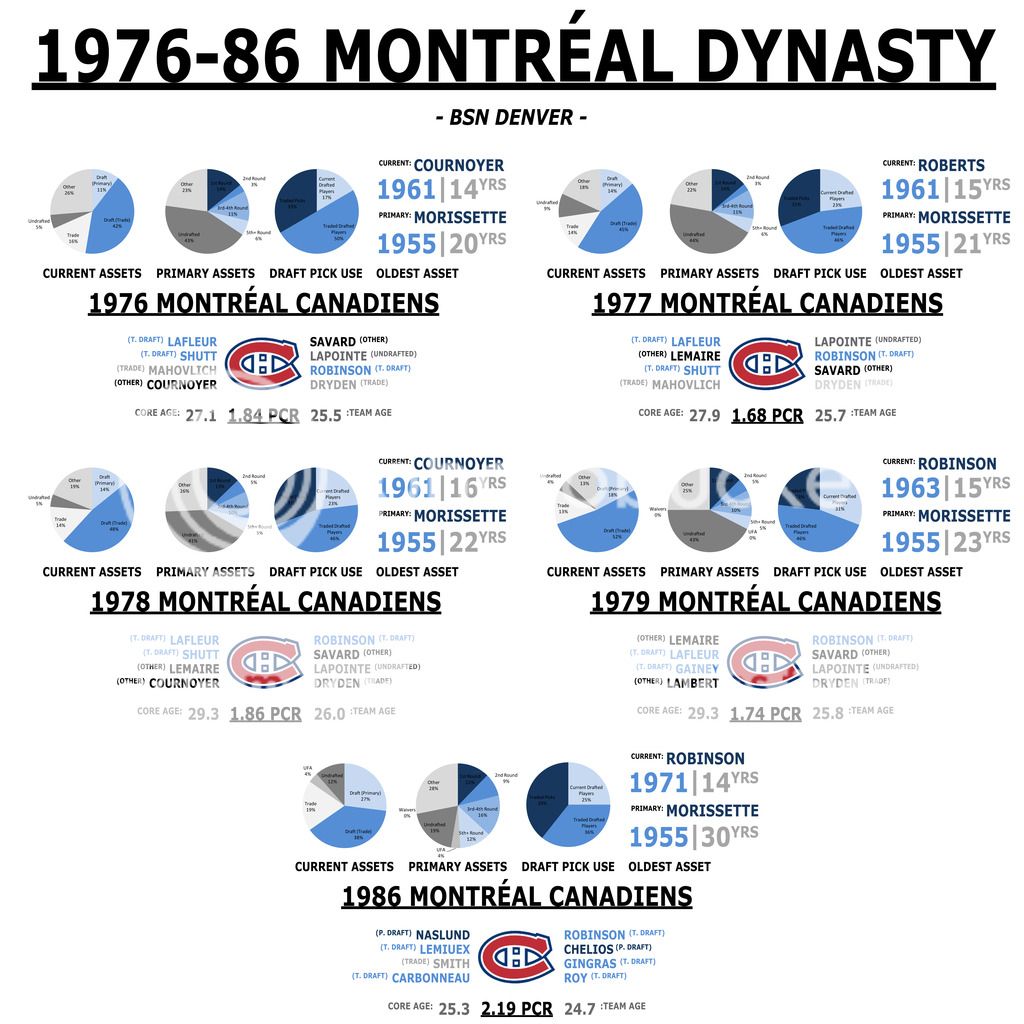
(Click Here for Full Size Image)
1976 Data Sheet
1977 Data Sheet
1978 Data Sheet
1979 Data Sheet
1986 Data Sheet
Hall of Famers: Cournoyer, Dryden, Gainey, Lafleur, Lapointe, Lemaire, Robinson, Savard, Shutt, Roy
Analysis: In order to understand Montreal’s Dynasty, one must first understand C-forms. Before the draft was instituted in 1963, original six teams gained talent by signing players to what equated to contract IOUs. Each club had an exclusive 50 mile negotiating radius over prospects, so hockey rich cities (like Toronto and Montreal) had first dibs on any young talent coming out of their large development pools. The American teams managed to get by under this system, but C-forms are a large reason why MTL and TOR were so dominant during that era.
By 1970, C-forms were officially phased out and replaced by the more fair Amateur Draft. Since Montreal no longer had their territorial rights to fall back on, they needed to do something new to stay competitive. Luckily for them, most teams didn’t understand the importance of draft picks and were happily willing to swap high choices for vets that could help them win now.
Through this method, they managed to collect an impressive number of other team’s top picks, including the 1st Overall in 1971, Guy Lafleur. Their army of scouts from the C-form days continued to pay off through smart draft choices and even more undrafted signings. This mentality showed throughout the late ’70s as well as the ’86 and ’93 Stanley Cup teams.
Trivia: Patrick Roy’s Montreal trade tree stretches back to three sponsored C-Form players.
Can This Work Today?: Probably not. While there are other teams that rely on traded draft picks (the 2000 and 2003 New Jersey Devils, for example), no team has come close to replicating the total dominance over the draft like the ’70s Canadiens. Teams seemed to figure out pretty quickly that they shouldn’t give up their picks.
With that bit of foreshadowing, it’s now time to talk about the team from Long Island.
(Click Here for Full Size Image)
1980 Data Sheet
1981 Data Sheet
1982 Data Sheet
1983 Data Sheet
Hall of Famers: Bossy, Gillies, Potvin, Smith, Trottier
Analysis: Unlike the Candiens – who built a dynasty on everyone else’s draft picks – the Islanders built one using their own. Their team in 1980 was 70% primary picks, a feat that hasn’t even come close to happening again. The definition of a “draft based team” has altered over the years to incorporate more trades, but the Islanders serve as an absolute example of a team built from within.
Trivia: Long Island was a part of the third wave of NHL expansion in 1972. Seven seasons later, the Islanders were the Stanley Cup Champions. It helped that one of the players they selected in the Expansion Draft turned out to be Billy Smith, a future Hall of Fame goalie. He was drafted from the Los Angeles Kings.
Can This Work Today?: It’s hypothetically possible, but fairly unlikely. Most modern teams rely far more on trades than the Dynasty-era Islanders ever did. However, unlike the Canadiens, NYI didn’t rely on outside trades for the draft picks that built their team. Potvin, Gillies, and Bossy were their first round picks, and Trottier was from the 2nd. If truly committed and lucky, this could work today, but would make the already difficult chore of building a contender that much more impossible.
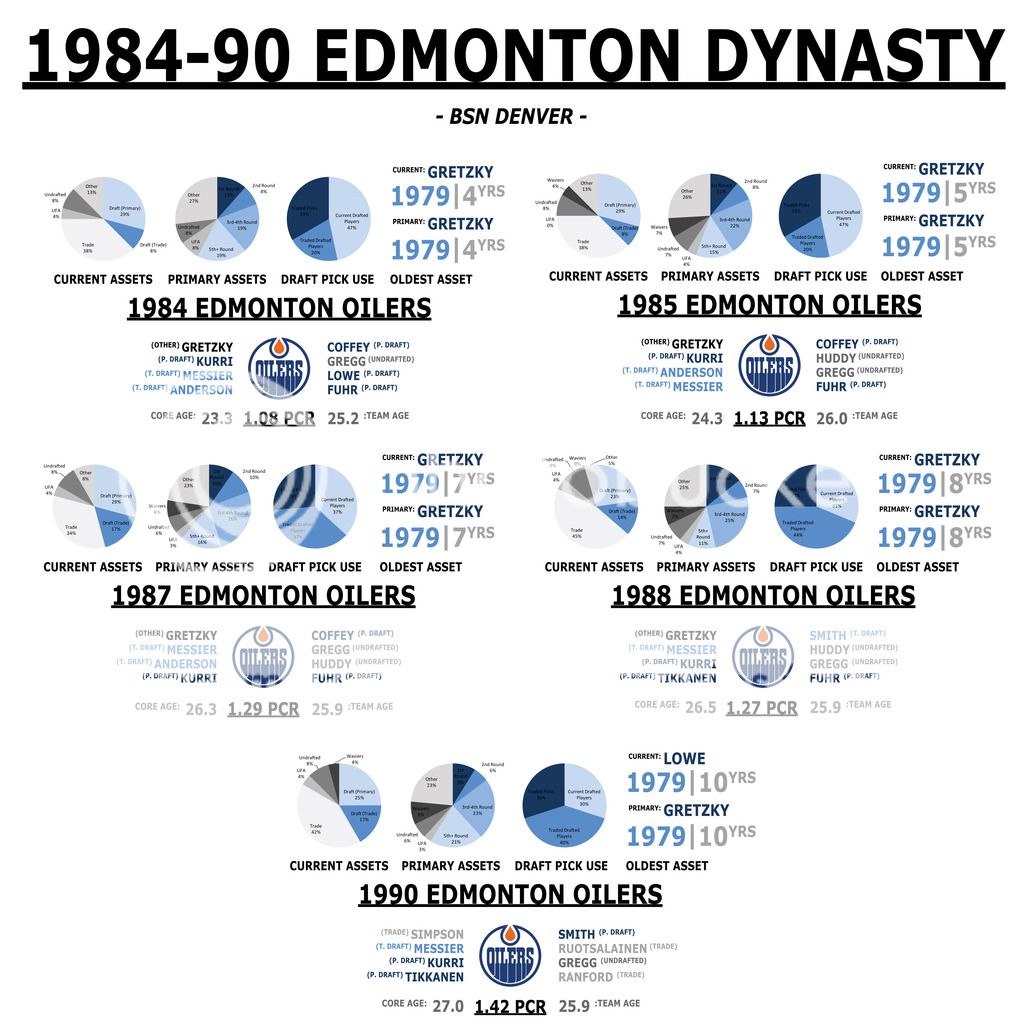
(Click Here for Full Size Image)
1984 Data Sheet
1985 Data Sheet
1987 Data Sheet
1988 Data Sheet
1990 Data Sheet
Hall of Famers: Anderson, Coffey, Fuhr, Gretzky, Kurri, Messier
Analysis: The Oilers humble beginnings have roots in the World Hockey Association (WHA), a rival league to the NHL, in 1972. They were only marginally successful until their owner agreed to buy the contracts of goaltender Eddie Mio, forward Peter Driscoll, and a certain 17-year-old named Wayne Gretzky from the failing Indianapolis Racers during the last season of the WHA.
Due to the special contract signed by Gretzky, his rights remained intact during the Oilers’ merger to the NHL in 1979. From there, the club got busy drafting. Glenn Anderson and Mark Messier were added in 1979, Paul Coffey and Jari Kurri were drafted in 1980, and Grant Fuhr joined them a year later. A series of trades were completed to fill out the roster, but during the 1980s, only players acquired and developed through the Oilers’ system filled the core positions.
Coffey was traded in 1987, and Gretzky followed him a year later. By 1990, the core had somewhat changed. The leading scorer for that Cup was Craig Simpson, a product of the Coffey Trade. Messier, Kurri, and Gregg were still around from the previous Cups, but the core was far more trade-based than it had been originally. In many ways, the 1990 team (and 1989 Calgary team for that matter) served as a transition into the next era of heavily trade-based team building.
Can This Work Today?: Well, considering how the Oiler’s team building plan centered around acquiring the best player in the history of hockey then drafting five Hall of Famers in the subsequent three years, it does seem like a bit of a hard act to follow.
However, this idea of building the core from within does have some merits. As mentioned with the Islanders, most modern teams do incorporate trades as a vital part of building, but Oiler-esque developing has become more popular in recent years. The prevalence of younger cores is on the rise as well. While I doubt the 23.3 average set by the 1984 team is broken any time soon, the league does seem to be trending more that way.
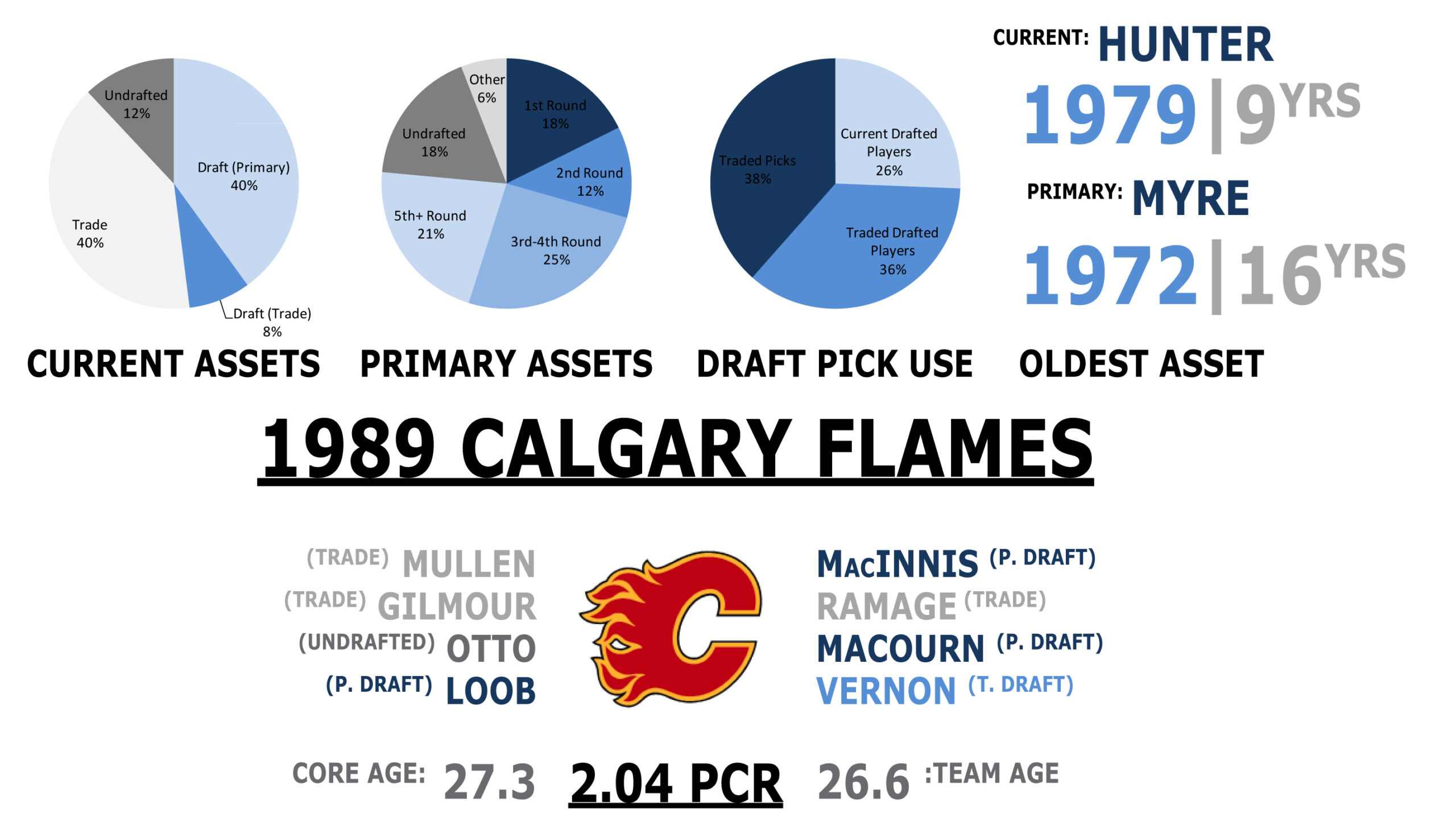
1989 Calgary Flames Data Sheet
Hall of Famers: McDonald, Mullen, Gilmour, Nieuwendyk
Analysis: There always has to be one party crasher, right? Fed up with their Albertan rival taking all the glory, the Flames staked their claim on the franchise’s only Stanley Cup as the 1980s came to a close.
While they lacked the shear fire power of the three dynasty teams, leading scorer Al MacInnis’s slap shot was not to be ignored. He managed 7 goals and 24 assists in 22 games during the playoff campaign, and future HHoFers Joe Mullen, Dougie Gilmour, and Joe Niewendyk contributed 16, 11, and 10 goals respectively. A 25-year-old Mike Vernon (whose career highlights would also include getting punched by Roy) backstopped them in net.
The Flames’ build was an interesting blend of both trades and primary draft picks. They relied fairly heavily on both in their core too. While it only brought them a single Cup, they were a competitive team for a number of years using this method.
Trivia: One of the assets that eventually found its way into Lanny McDonald’s tree (you know, the Rockies guy with the mustache? No, not Quenneville, the other one) was a player by the name of Pat Ribble. Mr. Ribble was drafted in the 4th round of the 1974 Amateur Draft by the Atlanta Flames. That pick originally belonged to the Islanders. While this in and of itself is not unusual, the reason for the transfer is.
In 1972, a young basketball player by the name of Julius Erving, also known as Dr. J, was eligible for the NBA draft. He had been playing with the Virginia Squires of the ABA (think of it as the WHA of basketball), but after a falling out, he signed a contract with the Atlanta Hawks (NBA) before the season began. Unfortunately, no one told the Milwaukee Bucks (NBA), who still drafted him in the first round. After a three-judge panel got involved, Erving was ordered back to the Squires of the ABA.
However, like the WHA, teams were often on unstable financial grounds. The Virgina Squires were one such team. Only a year later, in 1973, they were forced to sell Erving’s contract to the New York Nets (ABA), who were owned by the same group as the New York Islanders. In order to smooth things out with the Atlanta Hawks, who were conveniently owned by the same group as the Atlanta Flames, the Nets/Islanders owners sent the Hawks/Flames owners cash to pay court fees and a 4th round pick in the upcoming year’s NHL entry draft.
So, in short, a Basketball Hall of Famer is a part of Hockey Hall of Famer’s trade tree. Evidently sports transactions in the 1970s didn’t have to make any sense. Go figure.
Can This Work Today?: You know, I feel like I’ve seen this sort of setup somewhere else. Hmmm, let me think…
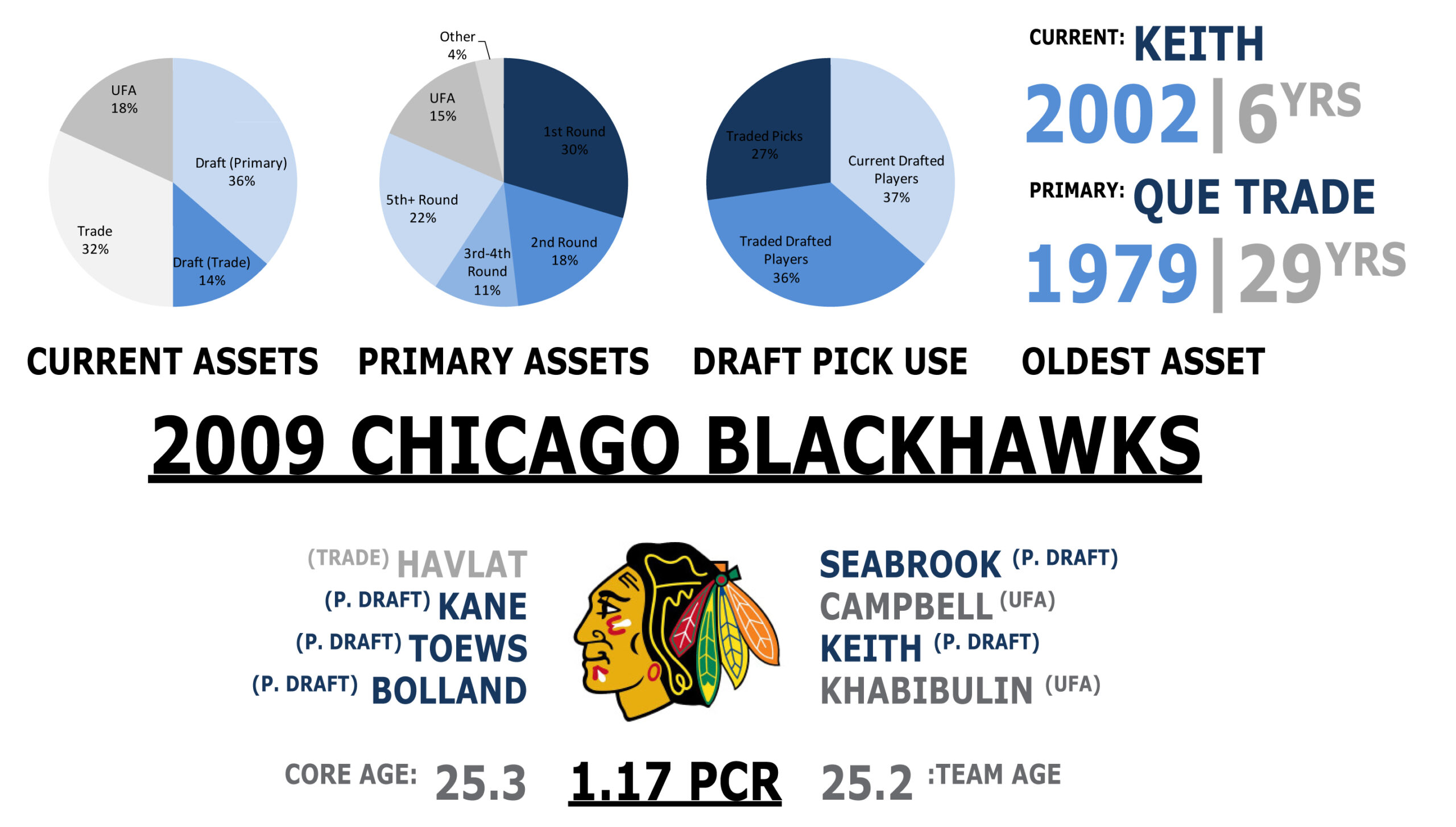
There are a few slight differences, but considering Chicago’s role in the current NHL, I think the ’89 Flames setup (Erving whatnot excluded) is an interesting study for modern draft/trade based teams.
Comments
Share your thoughts
Join the conversation



